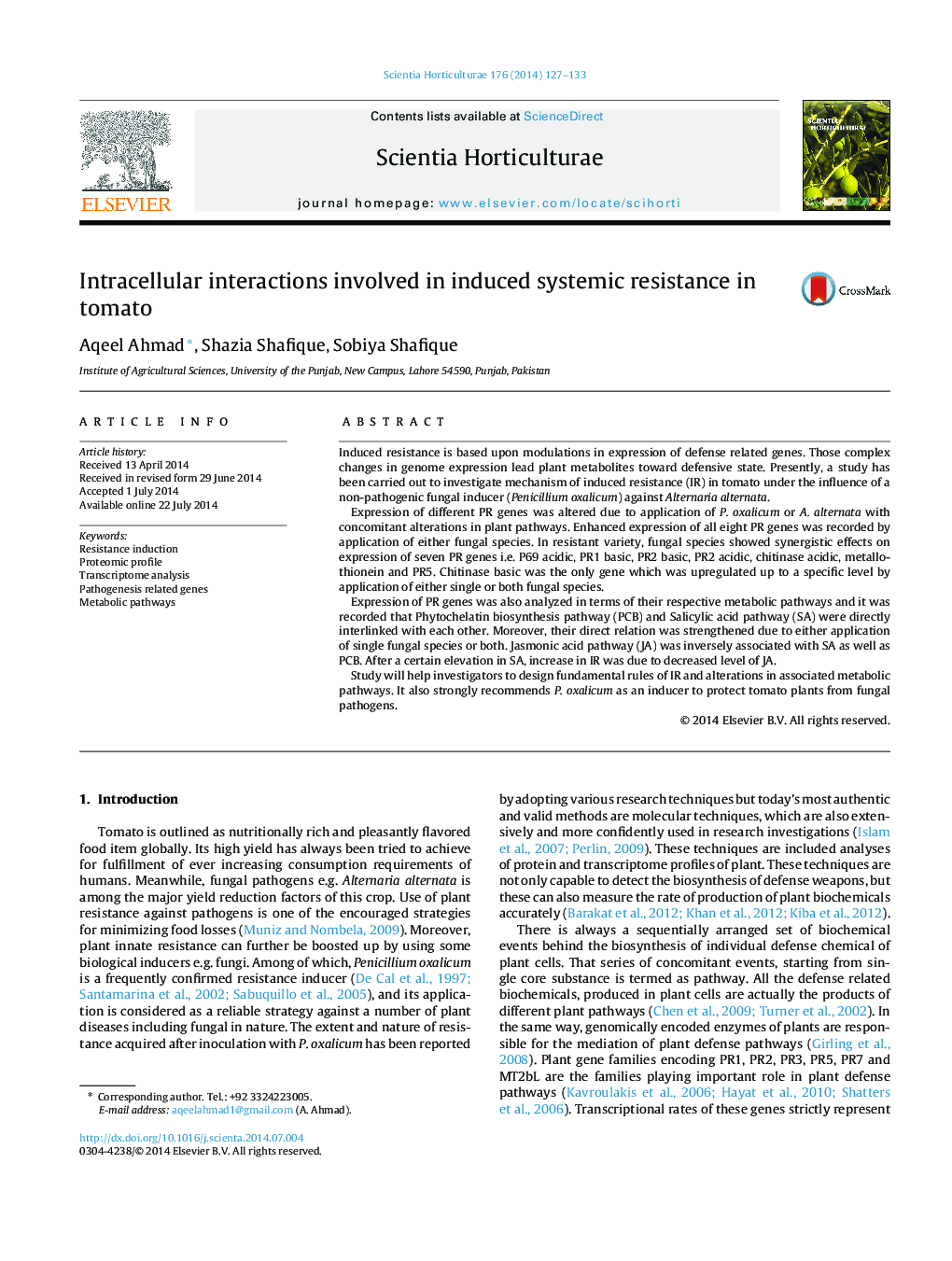| کد مقاله | کد نشریه | سال انتشار | مقاله انگلیسی | نسخه تمام متن |
|---|---|---|---|---|
| 4566746 | 1628822 | 2014 | 7 صفحه PDF | دانلود رایگان |
• Penicillium applications slightly modulated transcriptomic profile of tomato varieties toward defensive states.
• Those slight modulations had potential to turn quickly into strong antifungal factors when presence of a pathogen (Alternaria alternata) was detected.
• Semi-quantitative RT-PCR proved “Salicylic acid pathway (SA)” as the main factor in plant resistance.
• Negative effects of “Jasmonic acid pathway (JA)” on SA have been concluded on molecular basis.
• All results recorded strongly recommend the use of P. oxalicum as a fungal inducer to protect tomato plants from fungal pathogens.
Induced resistance is based upon modulations in expression of defense related genes. Those complex changes in genome expression lead plant metabolites toward defensive state. Presently, a study has been carried out to investigate mechanism of induced resistance (IR) in tomato under the influence of a non-pathogenic fungal inducer (Penicillium oxalicum) against Alternaria alternata.Expression of different PR genes was altered due to application of P. oxalicum or A. alternata with concomitant alterations in plant pathways. Enhanced expression of all eight PR genes was recorded by application of either fungal species. In resistant variety, fungal species showed synergistic effects on expression of seven PR genes i.e. P69 acidic, PR1 basic, PR2 basic, PR2 acidic, chitinase acidic, metallothionein and PR5. Chitinase basic was the only gene which was upregulated up to a specific level by application of either single or both fungal species.Expression of PR genes was also analyzed in terms of their respective metabolic pathways and it was recorded that Phytochelatin biosynthesis pathway (PCB) and Salicylic acid pathway (SA) were directly interlinked with each other. Moreover, their direct relation was strengthened due to either application of single fungal species or both. Jasmonic acid pathway (JA) was inversely associated with SA as well as PCB. After a certain elevation in SA, increase in IR was due to decreased level of JA.Study will help investigators to design fundamental rules of IR and alterations in associated metabolic pathways. It also strongly recommends P. oxalicum as an inducer to protect tomato plants from fungal pathogens.
Journal: Scientia Horticulturae - Volume 176, 11 September 2014, Pages 127–133
